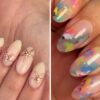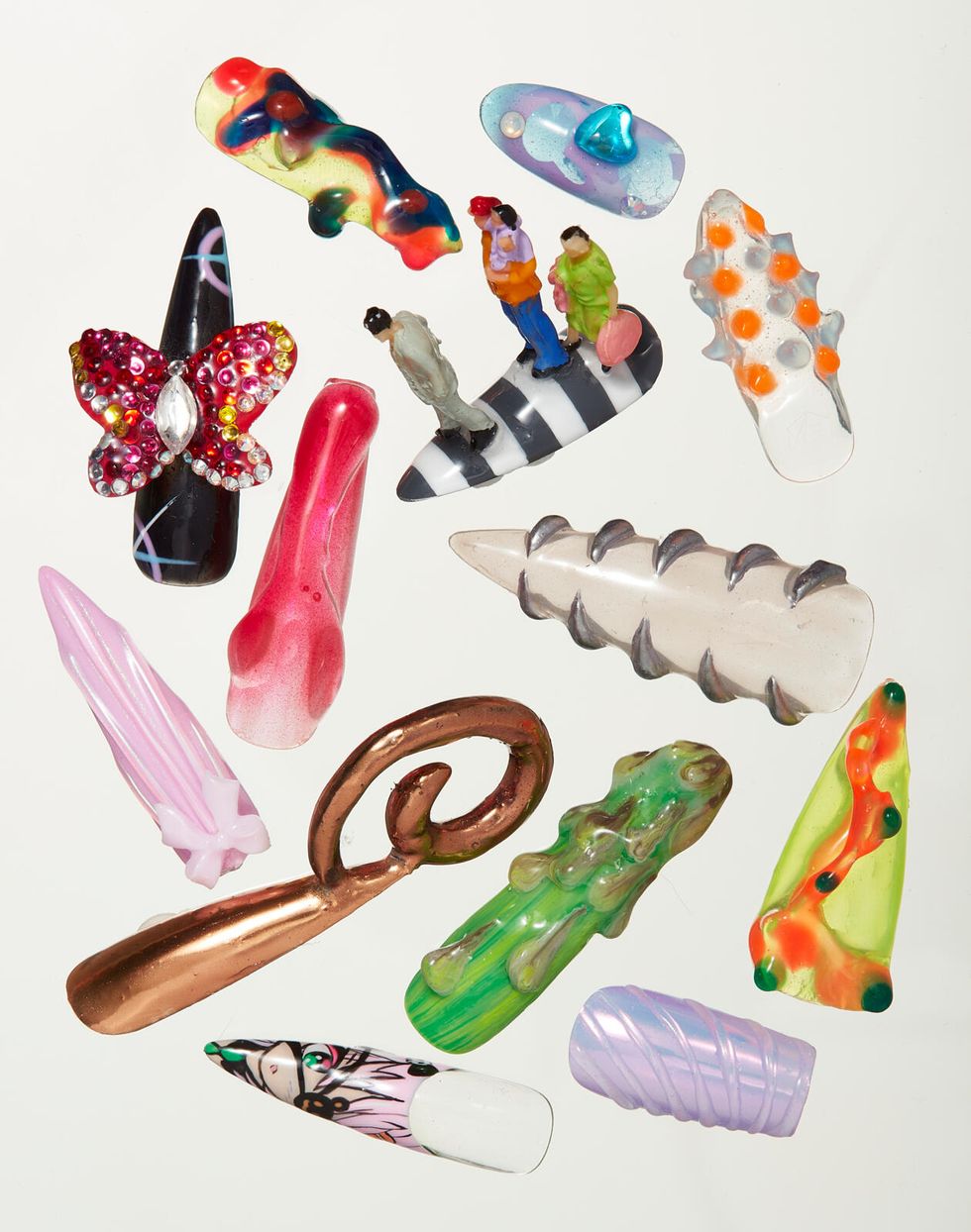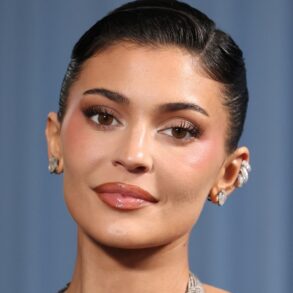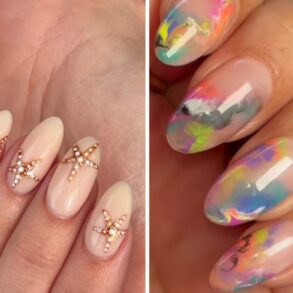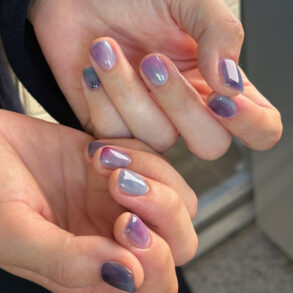Have you ever made art so daring that the U.S. Department of the Treasury called you up to talk about it? That’s the story nail artist Bernadette Thompson gets to tell about the manicure she did for Lil’ Kim on set in the late ’90s, setting off a chain of events that led to her becoming the first nail artist exhibited in New York’s Museum of Modern Art.
“On sets back then, they wanted plain nails—beige, sheer pink, or clear,” Thompson says. “All she had were little short nails! So I went into my wallet, took money out, cut it up, and did a French manicure.” The result, now known as money nails, became a defining moment in the history of hip-hop and beauty. The look went viral before the internet did, garnering the attention of the Treasury, which reminded Thompson that defacing dollar bills was illegal. “Fast-forward nearly 20 years and I get a call from MoMA,” she says. “Never in my wildest dreams did I think anything I did would be in a museum with Picasso and Basquiat.”
In the decades since, scandalous, glamorous, and even more over-the-top manicures have taken on a life of their own. You’ve probably seen takes on crystal “extendo” nails, epitomized by Jenny Bui’s work with her longtime client Cardi B, at your local grocery store. Your neighborhood nail salon is likely inundated with requests for “glazed donut” and chrome nails, thanks to Zola Ganzorigt’s work with Hailey Bieber. It wasn’t always like this.
Nail art has been around since ancient Egypt, when members of the upper class dyed their nails with henna. During the Tang dynasty in China, imperial concubines had their own exclusive process based on crushing flowers for the required pigments. Polished nails set you apart from the masses. An elaborate set means at least that much today, as a professional manicure can take several hours and cost a pretty penny.
What’s always been true is that our nails are a vehicle to express who we are or who we want to be. The 1950s saw the invention of the first acrylic sets. Two decades later, bold nails became a beloved form of cultural expression in Black and brown communities, long before they were ever spotted on a runway. It wasn’t long before extravagant nails were deemed distracting and unprofessional—a racist dog whistle. In 1988, the Chicago Tribune called Olympic medalist Florence Griffith Joyner’s famous manicures “dragon-lady fingernails” that looked “both dangerous and incapacitating”; she didn’t keep her nails short and neutral, making her a deviant compared with her white competitors. Now, an elaborate manicure is often a good-luck charm for Olympic athletes.
The “dragon-lady fingernails” moment was also a pointed insult stemming from Asian stereotypes: Both Black and Asian cultures have been the leaders of nail art around the world, with Japan and South Korea pioneering innovative nail technology and launching top artists for decades. Artists like Park Eunkyung, who goes by @nail_unistella on Instagram, have popularized more trends than I can count.
The work of Thompson, Bui, Park, Gina Edwards, Miss Pop, and Mei Kawajiri, among so many others, has helped usher in a new golden age of nail art—one where the unique perspectives of artists from a range of backgrounds and experiences that cut across class, race, and gender are celebrated.
This collective love for nail art has resulted in an explosion of global talent. Rita de Alencar Pinto, the founder of Vanity Projects, a salon with locations in New York and Miami, hosts nail artists in residence from around the world because she treats them as artists first. “I was able to reach out to top artists through Tumblr and offer them job opportunities and a residency program,” she says. “We started with pop-ups during Art Basel Miami Beach in 2012 and moved on to museums—and now the artists in my salons are the best of the best.”
Still, nail artists have had to advocate for their work to be considered part of a runway look. “In the ’90s, nail brands weren’t a factor backstage at all,” says Edwards, who recently created four designs for Prabal Gurung’s Fall 2023 show. “People would say nails weren’t that important. It made you feel so inadequate! But more designers appreciate us now because they realize it’s part of the look.” She remembers going from her work being dismissed in those early years to spending hours per manicure making 3D acrylic butterflies for the Alice + Olivia Fall 2019 show. “The wings were made separately from the body. It looked like it was lifting off the nail,” she adds. Nail art is sometimes so essential to a runway moment that designers hand off fabrics and trims from the collection to the nail artists to incorporate into the manicures, like when Edwards added the chandelier crystals from Pyer Moss’s 2021 couture show to the nails. Now a staple at fashion weeks, nail art in all forms has infiltrated high fashion, red carpets, and, undoubtedly, your TikTok algorithm.
The pandemic’s DIY boom pushed our hunger for tutorials and nail content even further. “People doing their own nails is definitely a trend,” says Kawajiri. Born in Japan but now based in New York, she specializes in maximalist nails, works with clients like Dua Lipa, and is considered one of the most influential manicure tastemakers of our current era. Kawajiri credits social media for today’s anything-goes manicures. “Nail trends are always changing because of TikTok. Lengths and shapes are all different, and it’s more genderless; everyone can have art, extensions, and you can even have different lengths on the same hand,” she says. “You can play with confidence and without fear of judgment. Nail culture has more freedom now!”
This post was originally published on this site be sure to check out more of their content.


